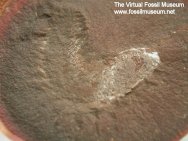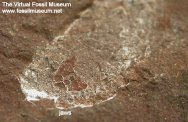 Description:
The Mazon Creek deposits of the region near Braidwood, Illinois
rival the other famous Lagerstatten such as the Burgess Shale, Solnhofen,
and Liaoning for the diversity of organizsms. Many exquisitely preserved
specimens are found in the ironstone nodules that make up the Mazon
Creek flauna and flora. The majority of collecting areas are the
spoilage monunds of abandoned coal mines, the most famous of which
is Peabody Coal Pit 11. Pit 11, for short, is now a cooling pond
for the Braidwood nuclear power plant, but with more 100 other localities
making up the fossil site, specimens still are discovered. Description:
The Mazon Creek deposits of the region near Braidwood, Illinois
rival the other famous Lagerstatten such as the Burgess Shale, Solnhofen,
and Liaoning for the diversity of organizsms. Many exquisitely preserved
specimens are found in the ironstone nodules that make up the Mazon
Creek flauna and flora. The majority of collecting areas are the
spoilage monunds of abandoned coal mines, the most famous of which
is Peabody Coal Pit 11. Pit 11, for short, is now a cooling pond
for the Braidwood nuclear power plant, but with more 100 other localities
making up the fossil site, specimens still are discovered. 
The
Polychaeta (or Bristleworms) that is shown here have a diverse representation
among Mazon Creek specimens. The segmented bodies of the Polychaeta
have paired lobes called parapodia which have a function in locomotion
or respiration. The parapodia bear numerous bristles which are the
source of the name of the class (Polychaeta means many bristles).
This one was surely a predatory species, as are many modern-day
bristleworms, based on the formidable pair of jaws it possessed
(the common name is “jaw worm”) that were mounted in
an evertible proboscis. Note the distinct jaws in the close up picture
above.
|